Best Oil to Season Cast Iron
This post may contain affiliate links. We participate in the Amazon Services LLC Associates Program, an affiliate advertising program designed to provide a means for us to earn fees by linking to Amazon.com and affiliated sites at no extra cost to you.
Not all oil is created equal. There are those with different smoke points, allergens, and some that are just not safe to use on cast iron. Here we’re going to talk about the pros and cons of various oils for seasoning your cast iron so you can make the best decision for your legacy cookware.
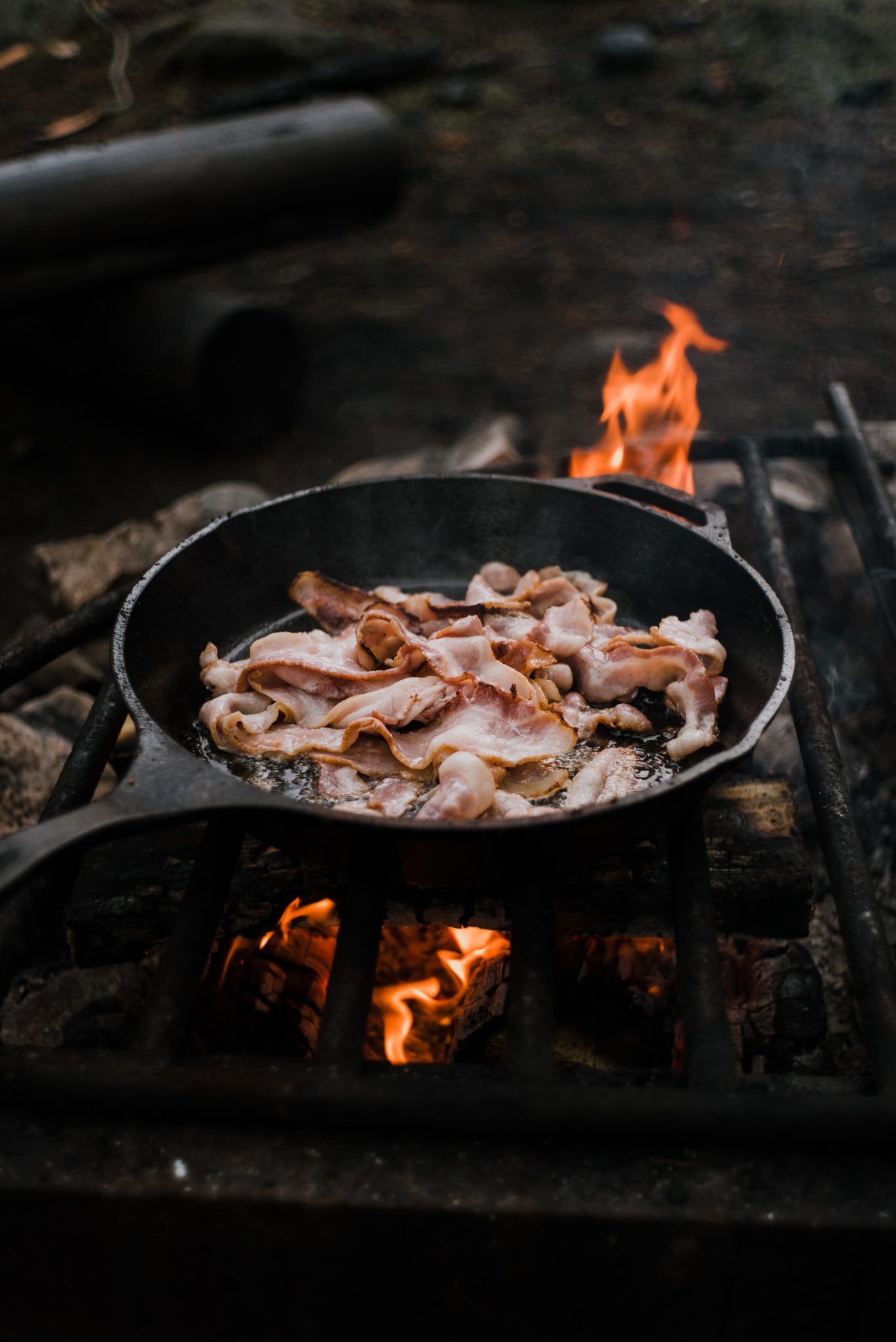
Understanding Seasoning
When someone talks about seasoning on cast iron, they’re referring to the protective coating found or built up through use, on traditional or raw cast iron. Through use and application of oil and natural fats when cooking, a layer of fat and oil is deposited into and onto the cast iron. This acts as a protective coating that nourishes the cast iron as well as making it non-stick over time. Most newly purchased cast iron these days comes pre-seasoned. It has a thin layer applied at the factory making it ready to use right out of the box after a light wash. Other cast iron obtained through friends, family, or antique stores may be seasoned or not. Sometimes even those already seasoned, will require stripping of old seasoning and a build up of new seasoning.
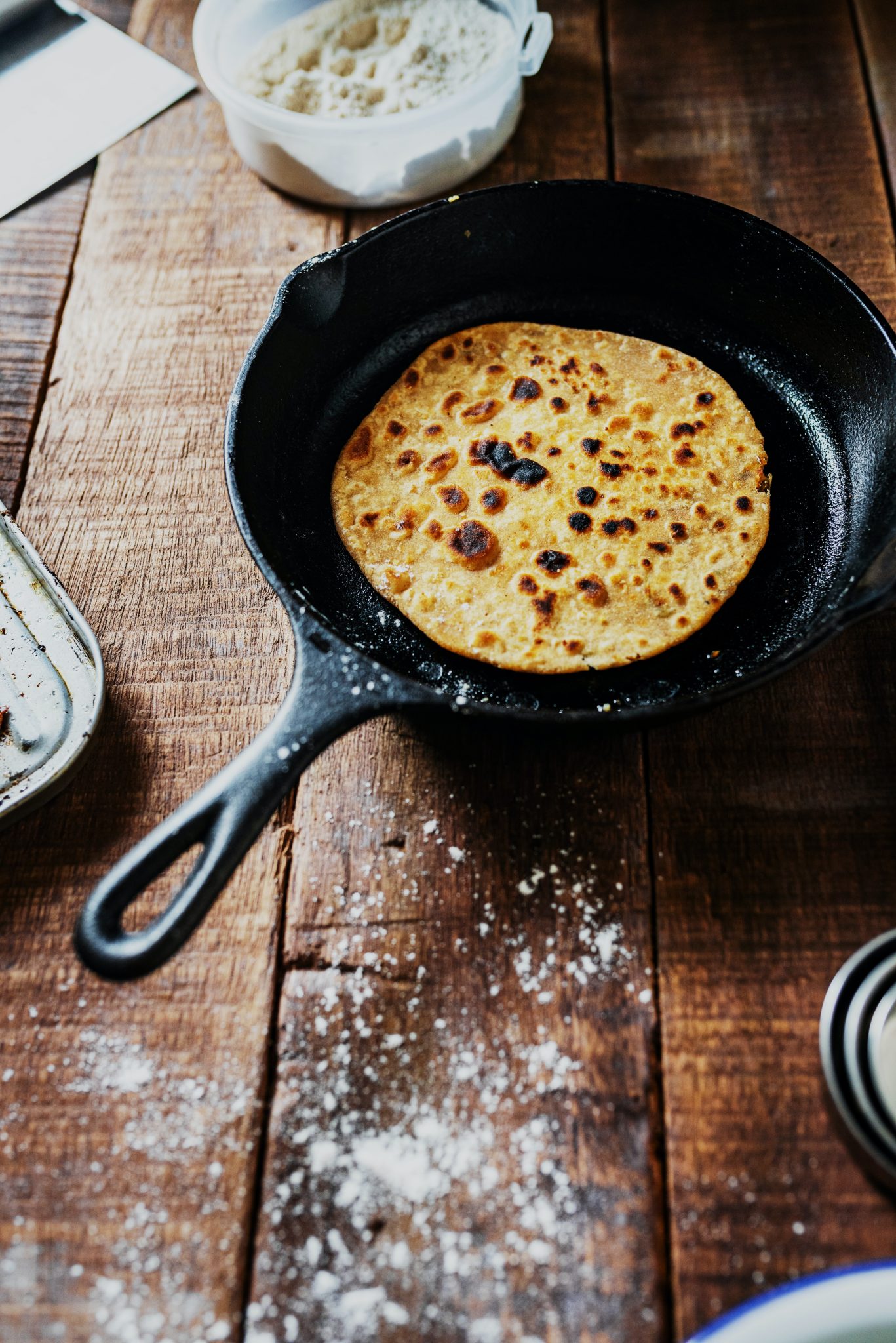
Top Tip for Understanding Seasoning
I get asked all the time about seasoning cast iron. How to know when enough is enough, when to season, etc. This is always my response and makes the most sense to especially women.
Think of your cast iron as an extension of your skin. Washing your face with harsh chemicals and exfoliants every day is going to lead to dried, cracked skin. While washing your cast iron with a gentle soap and sponge after each use isn’t a bad thing, we need to remember to moisturize. Cast iron is essentially moisturized with good oils, much like our faces, after cleansing. This provides hydration and a smooth complexion. Without moisturizer, we can find divots, pockets, scratches, lines, etc. more apparent due to the dry nature of freshly cleaned skin.
In addition to applying moisturizer, you’ll want to apply while the face or cast iron is still warm. While warm, the pores are open and able to receive and absorb moisturizer the best versus a cold face where the moisturizer would sit on top of the skin and create a sticky, unpleasant feeling.
Lastly, always start with a little and add more as you see dry spots are visible. Too much moisturizer and you’ll end up with fatty pockets or super oily feeling residue. The amount of moisturizer and heat point of the skillet both play a critical roll in being absorbed and providing protection.
Also, consider the environmental conditions. You wouldn’t put on a nighttime cream and then go run a 5k. Just like you wouldn’t season your cast iron with an oil of a lower smoke point, like olive oil, if you’re constantly searing meats at a high temperature. For that, you would want an oil with a high smoke point, like avocado oil, that will not produce a burnt taste on your food or skillet.
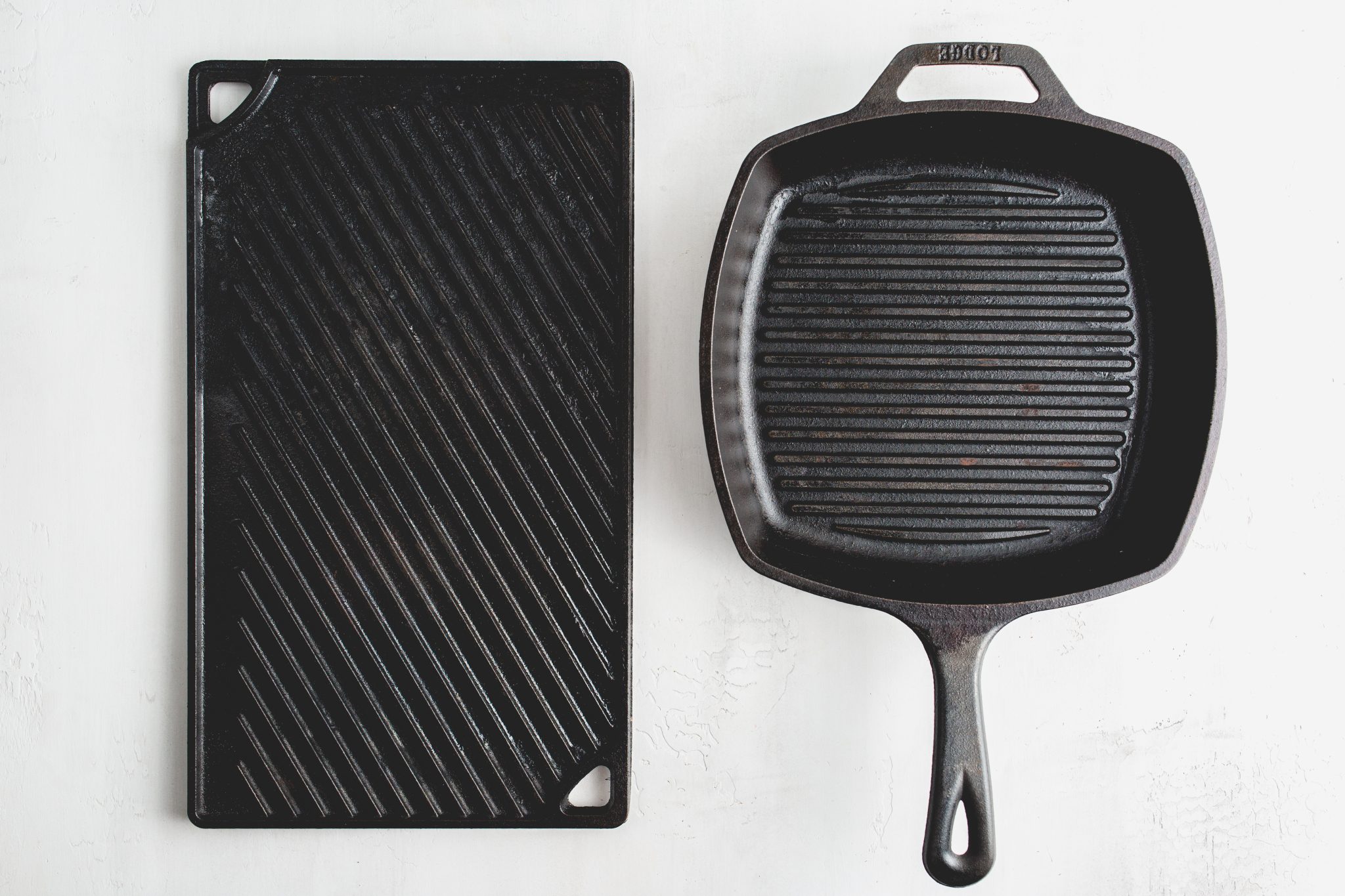
How to tell if my cast iron needs to be stripped
These are just a few of the most common signs as related to oil for re-seasoning your cast iron.
Rust.
The presence of rust is likely going to require some elbow grease or chemicals to remove. In removing the rust you’ll also end up removing the protective layer of oil. And because you want a nice even coat all around your cast iron, the best/easiest way to achieve this is going to be stripping and re-seasoning of the entire piece. The exception here, as there always is one, is the amount of rust. If it’s very shallow and/or a very small surface area, and/or not in direct contact with food, you may be able to address the problem area only with a stiff pad and apply seasoning as normal.
Oily Sticky Texture.
Much like the rancid oil we will talk about next, a piece of cast iron with an oily sticky texture is a sure sign that something went wrong. This will often happen if the cast iron was not hot enough to absorb the oil you coated it with after routine care, or you put on too much. Without the proper routine care and maintenance of your cast iron, you’re likely to create a build-up or residue on the cast iron (can be outside or inside) and it will not come off with a deep wash only. You’ll need to essentially burn off or strip and re-season the cast iron to remove all the excess oil that did not absorb properly.
Rancid Oil.
If your collection has grown to the point that you have a favorite piece of cast iron, you likely have pieces that you don’t use nearly as much. You may find during Spring cleaning that there are a couple of pieces you haven’t used in over a year. Upon smelling them, you may notice an “off” smell or rancid smell. This is because all oil does have a shelf-life and if left alone without use and further application, you could be running into the issue of a rancid oil on your cast iron. In this case you may be able to scrub and wash well with Dawn dish soap to remove a layer of oil and simply continue on with re-seasoning it through use. However, with cast iron being as porous as it is, you may find that stripping and re-seasoning the piece from the base level is the only way to get rid of the rancidity.
Dirt and Grime.
This is a little more peace of mind. But if you find an old piece of cast iron at a New England barn sale, for example, and it has been exposed to the elements and creatures that live in the area (cats, mice, rats, etc). you’ll likely want to give it more than just a tough scrub with dawn dish soap. Being sure to remove any possible remnants of fecal matter and germs in this case, would be wise.
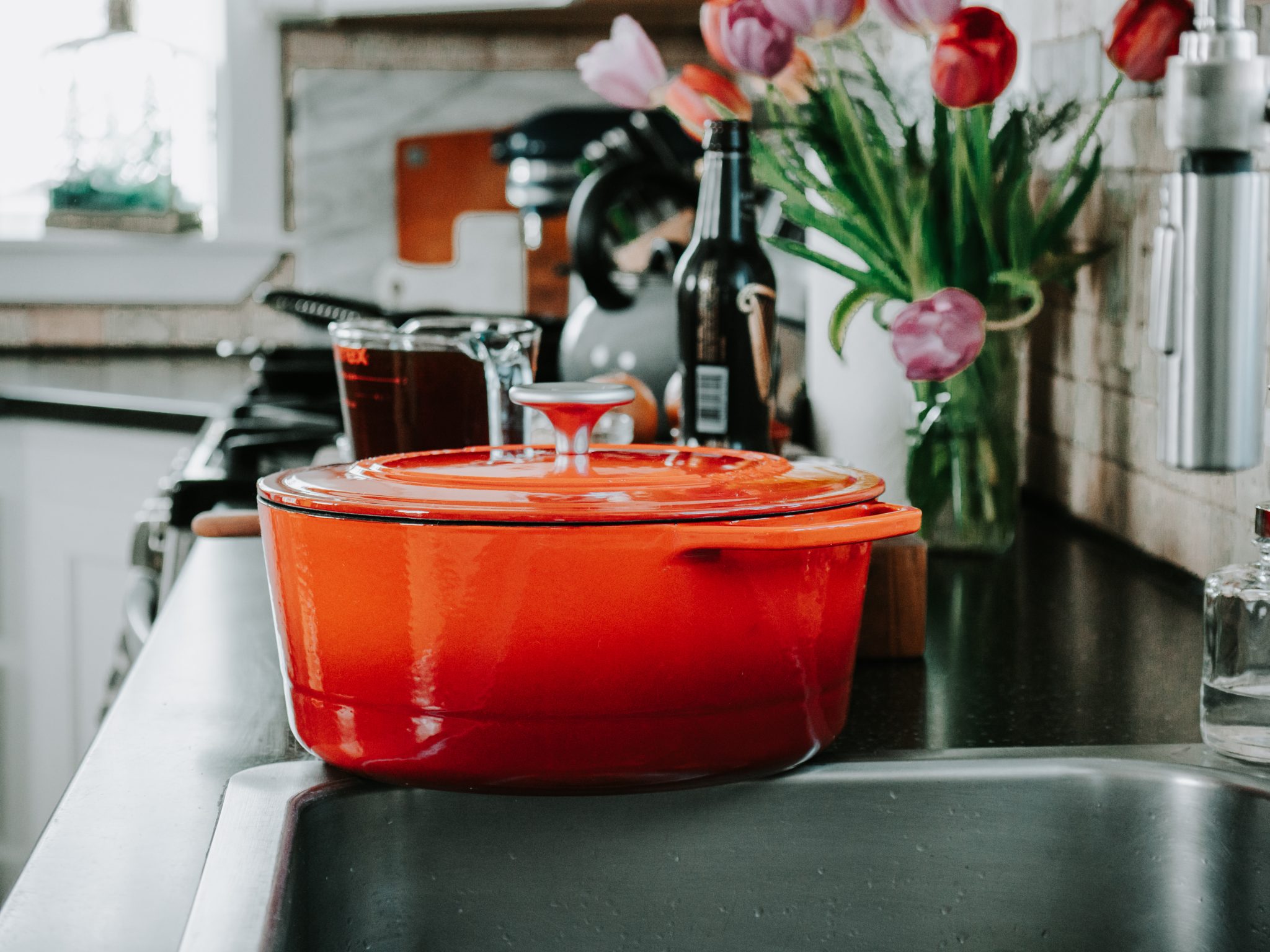
Does enameled cast iron need to be seasoned?
No enameled cast iron does not need to be seasoned. Enameled cast iron, while cast iron in the center, is coated with a glass mixture virtually sealing the cast iron. This is why you can wash enameled cast iron with soap and even run it through the dish washer and not worry about harming the actual cast iron. For more information on enameled cast iron, check out this post.
Smoke Points
Smoke points of oils can help you decide what oil is best for seasoning your cast iron based on what you cook the most. Smoke points are not the only point though. While smoke point can be an indication of burning oil, which can leave an awful taste in your food, smoke being present is not the only thing to consider.
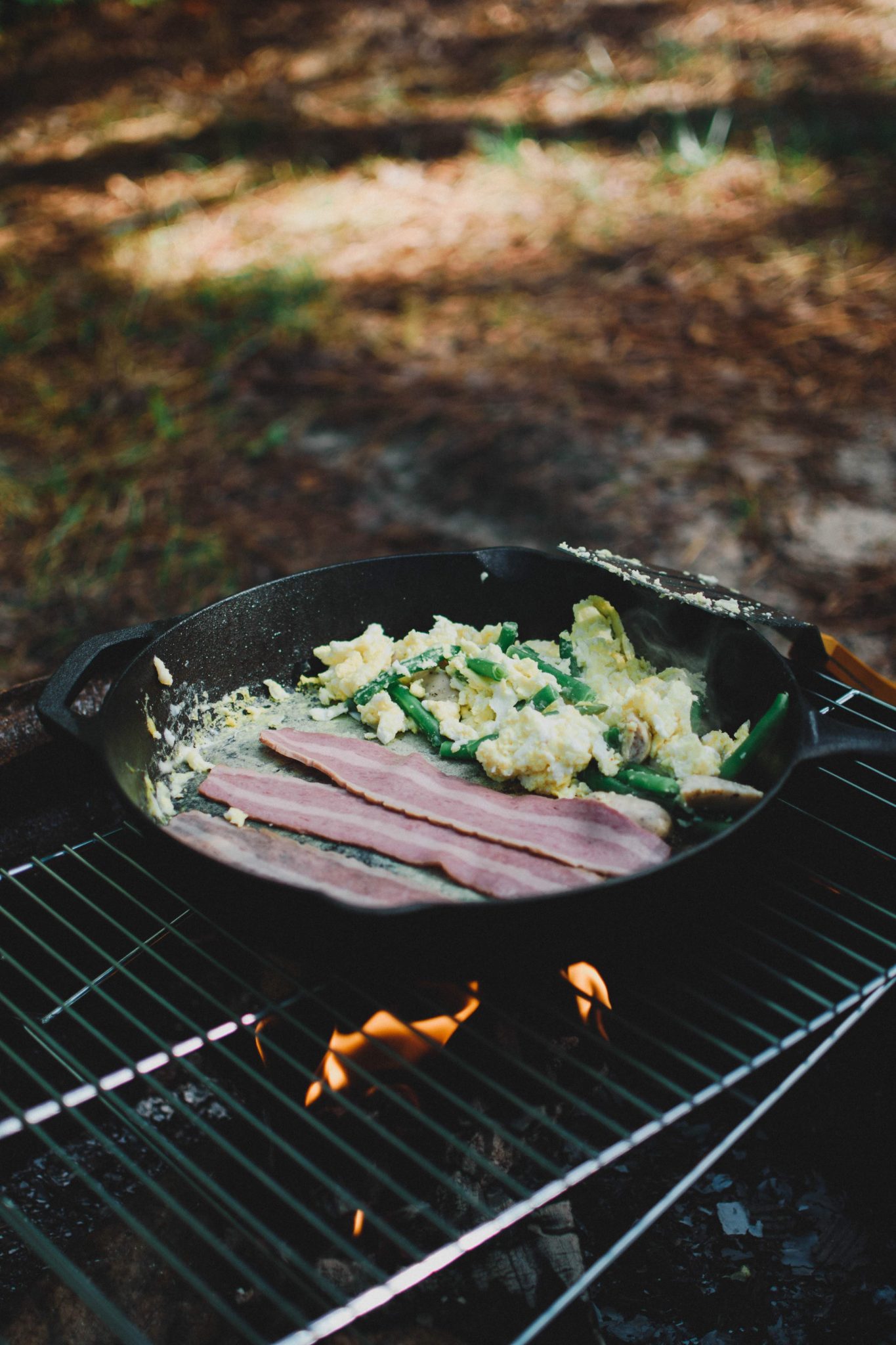
Refined Vs. Unrefined
Understanding how oils are made can help you understand the chemical make-up and stability of the oils.
Naturally Processed, or unrefined/non-refined oils, are ones like Extra Virgin Olive Oil that have been physically pressed with the use of a machine and what we will call “natural heat” – heat that comes from friction and force, not chemicals. Cold-pressed oils are those that are naturally processed to keep the temperature from becoming too hot and producing a bitter taste.
Chemically Processed, or refined oils, are ones that are both ground and squeezed through the use of a machine, but still require the additional use of chemicals to separate the oil from the pulp of the fruit, vegetable, or nut. In addition to the chemical process of separating the oils, the oil will also go through a bleaching and deodorizing chemical process. While chemically processed oils can result in high smoke points and an increased shelf-life, it also results in stripping the oil of it’s nutritional value and introduces chemicals into the final product.
Here is a list of commonly refined oils (note that olive oil is listed here and not all olive oil is refined):
- Cottonseed Oil (Crisco)
- Palm Oil
- Coconut Oil
- Safflower Oil
- Sunflower Oil
- Corn/Soybean Oil
- Olive Oil
- Canola Oil
- Rapeseed Oil
- Grapeseed Oil
- Vegetable Oil
- Margarine (or any other ‘buttery’ spread)

The Types of Fats in Oil
Oils are 100% fat. No two ways about it. But that doesn’t mean that the fat is bad. There are different kinds of fats and we’re going to dig into them here while keeping it as simple as possible. Fats are made up of carbon, hydrogen, and oxygen atoms. A carbon atom, will always try to make 4 bonds for stability. That’s where we will start.
Saturated Fats
A saturated fat is one where all four bonds of the carbon atom are full with hydrogen atoms. Then the carbon atoms attach to one another like magnets, and stack in a single-file line. Due to how they’re able to stack, they become solid at room temperature. The best known example of this would be coconut oil. There are other fats such as butter and lard that have saturated fats, but are balanced out by the health benefits of monounsaturated fats.
Unsaturated Fats
Unsaturated fats, as you would expect, mean that not all of their bonds have been filled. Because of this they have to “hold hands” or create double bonds with other carbon atoms. This makes them less able to stack neatly and often present themselves as liquid, or fluid when at room temperature.
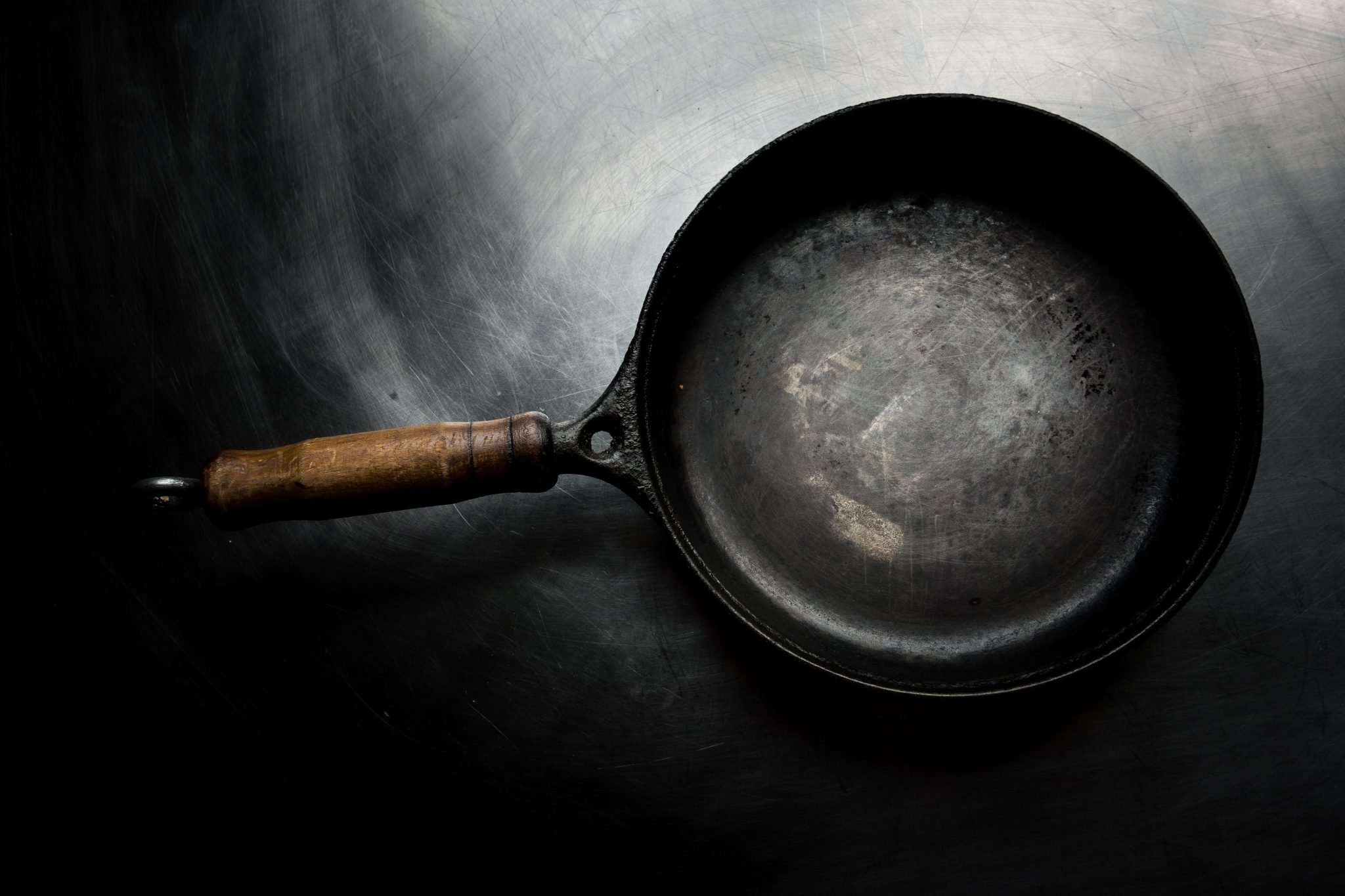
Monounsaturated & Polyunsaturated Fats
While our bodies need all of these fats to operate at peak performance, a body with lower amounts of saturated fats and higher amounts comparatively of unsaturated fats will see more health benefits. A monounsaturated fat or oil is one that has only one double bond. It presents as a kink in the chain. Whereas polyunsaturated fats have more than one double bond throughout the chain.
When choosing an oil, a lower percentage of polyunsaturated fats or ones that are labeled monosaturated, while also being labeled as “unrefined” will prove to handle the heat in the kitchen better than others. Seed oils such as Grape Seed, Vegetable Oil, and even Crisco have been heavily refined at a high heat and make them less stable than other oils such as Extra Virgin Olive Oil, Avocado Oil, Flax Seed Oil and Nut Oils (like Walnut).

Health Note: Keep in mind that while some fats and oils may be safe and a great option for cooking with based on health benefits such as coconut oil, it does not mean it makes for the best oil to season your cast iron with. You do not have to use the same oil for both applications. You can mix it with no issue.
Polymerized Oils – Seasoning
In the most simple of explanations, seasoning of cast iron IS the polymerizing of oils (whatever oil you use). When the oil or fat polymerizes during thermal application, the fat becomes more of a “plastic”. It becomes hard and resistant to sticking. Note that this takes many thermal applications and uses before you’ll see the results of a shiny, non-stick cast iron skillet. What you’re doing through the application is permanently bonding the oil to the iron which protects it from food, dust particles, etc. This is one of the reasons that washing a well-seasoned cast iron skillet with dish soap every now and then will not hurt it. The continuous re-application of polymerized oils will keep your cast iron safe and building up it’s protective layers.
Lard & Bacon Grease
WHAT IS IT: Fat rendered from pork or pork products.
SMOKE POINT: 345-375F
PROS: If you cook pork often, you’ll likely have this on hand all the time. You do not need to purchase anything if you are already cooking bacon. If you’re looking for a similar item with little to no smell or taste, lard can be used instead of bacon fat. Lard can be found at your local grocer or butcher, or can be made at home. Lard and bacon grease will last a long time.
CONS: Not kosher, not vegan, and if you do not use your cast iron often, it can go rancid as a protective layer because it is an animal bi-product.
WOULD I USE IT? Yes! We use our cast iron all the time (obviously) and have no moral reasoning as to why we would not use pork products. Lard and bacon are one of our top ways to season our cast iron after use.
Canola Oil
WHAT IS IT: Oil from the Canola or Rapeseed Plant.
SMOKE POINT: 400F
PROS: Has a neutral flavor and smell making it acceptable for all cooking situations. Has a high smoke point. Low in saturated fats, no trans fats, and a good source of monosaturated fats compared to other vegetable oils.
CONS: Canola oil is highly refined, lacks antioxidants, and is GMO.
WOULD I USE IT? I try to stay away from canola oil. However, I may use it for deep-frying given how little we actually deep fry and the high temperature needed for frying foods.
Vegetable Oil
WHAT IS IT: Vegetable Oil can be made from a variety of vegetables, fruits and seeds. Most often, the vegetable oil you’ll find at the store is made up of a mixture of corn and soy bean oil.
SMOKE POINT: 450F
PROS: Neutral in flavor, high in smoke point, low in cost, making it the most widely available nationwide and most commonly used for frying foods.
CONS: The health benefits of corn and soybean are few and far between. Vegetable oil is 99% of the time chemically processed based on the “vegetables” used to produce the oil.
WOULD I USE IT? We avoid it if we can. There are other, better for you oils to use when cooking and even when frying.
Avocado Oil
WHAT IS IT: The oil extracted from the avocado fruit tree.
SMOKE POINT: 520F
PROS: Those with allergies to tree nuts can safely have avocado oil. Though it looks like a nut and appears on a tree, avocado is actually a fruit and more like olive oil compared to walnut or coconut oil. Avocado oil can be cold-pressed and unrefined providing you with the highest of health benefits.
CONS: Avocado oil is expensive. This is not an oil that you would want to deep-fry in. Using avocado oil in cooking, searing, and seasoning will be your best bet. It does have a slight taste to it and may not be suitable for all recipes.
WOULD I USE IT? Absolutely! Avocado oil is one of our go-to oils. I like to use this especially when searing steaks and other cuts of meat.
Olive Oil
WHAT IS IT: Olive oil is made of monounsatured fatty acids from the fruit of olive trees. That’s right, olives are a fruit.
SMOKE POINT: 320F for EVOO, 410F for Olive Oil
PROS: Has a long shelf-life unopened, up to two years. But should be used within 2-3 months after opening. High in monosaturated fats, no trans fats, has excellent flavor, has good chemical compounds, has antioxidants, and has been tested far more than any other oil available on the market.
CONS: Is sensitive to light and heat, and as such should be stored in a cool, dark area of your pantry. Knowing how to pick a “good” olive oil can be tricky. EVOO specifically can be more expensive than it’s competitors.
UNDERSTANDING THE DIFFERENCE: When shopping for an olive oil, look for Extra Virgin Olive Oil compared to ones simply labeled Olive Oil. Olive Oil is rated in tiers. Extra Virgin Olive Oil is the best in that it has been cold-pressed and contains only the best olives, whereas simply Olive Oil is a mixture of cold-pressed and processed oils, making it less stable compared to EVOO.
WOULD I USE IT? Absolutely. EVOO is one of my go-to oils for cooking and seasoning.
Flaxseed Oil
WHAT IS IT: Flaxseed oil is naturally processed from flaxseeds.
SMOKE POINT: 225F
PROS: Has a high amount of Omega-3 fatty acids, also found in chicken and fish. Highest amount of antioxidants found in any other plant derivative. High in fiber. Improves heart health, protects against cancer, and lowers blood pressure. Has a low smoke point and can adhere quickly to cast iron. Contains 20% monounsaturated fatty acids.
CONS: Flaxseed oil has such a low smoke point that over heating the oil can turn the healthy fats, into harmful ones. Since most people are cooking or baking at 350F or higher, I would not recommend using this oil during cooking. Save it for dressings, smoothies etc. Not only that, but flaxseed oil when built up in layers on cast iron has a tendency to flake off during use, getting into your food and creating an uneven surface on your cast iron.
WOULD I USE IT? No, I would not recommend flaxseed for seasoning.
Cottonseed Oil (Crisco)
WHAT IS IT: Crisco is a refined hydrogenated fat that is semi-solid at room temperature and is made from the seed of a cotton plant.
SMOKE POINT: 420F
PROS: It does a good job of creating a non-stick layer. You can purchase it in large quantities for cheap.
CONS: Crisco is made up of a high amount of trans fats. It comes from the chemical process of turning cottonseed, an inedible plant, into a semi-solid oil. Crisco, was made in the early 1900s for the sole purpose of making more money from the waste product of cotton growers. During the depression it was marketed as a cheap alternative to lard, which as a meat, was expensive to come by. Crisco has been banned from at least 2 European countries as a product unsafe to consume.
WOULD I USE IT? Absolutely not. There is no nutritional value and is actually very bad for your overall health. While yes it creates a wonderful non-stick on cast iron, you might as well be cooking with Teflon. One of the benefits to cooking with cast iron is the health benefits of iron. You negate all of those health benefits by layering up the cast iron with chemicals and a substance that was never created to be consumed. While there are other oils I would push my luck with and use if I have them, Crisco/Cottonseed Oil is an absolute no.
Peanut Oil
WHAT IS IT: Oil made from the edible seeds of the peanut plant. Can be refined or unrefined.
SMOKE POINT: 450F
PROS: A high smoke point, can be purchased as cold-pressed, available in large quantities at a reasonable price, and available in a variety of flavor strengths. High in good fats such as monounsaturated and polyunsaturated fats.
CONS: Peanuts are one of the most common allergens out there. For those with peanut allergies, using peanut oil to season your cast iron could be detrimental. Some peanut oils are also mixed with soybean oils. Be sure to check the label for pure peanut oil.
WOULD I USE IT? We use peanut oil for frying in our enameled Dutch ovens. Using it in this method I can clean and scrub with soap and sanitize to ensure all the peanut reside is completely gone if need be.
Coconut Oil
WHAT IS IT: Oil made from pressing of coconut meat or dried coconut.
SMOKE POINT: 350F
PROS: Available in both refined and unrefined. Virgin coconut oil refers to using fresh meat from the coconut. Available in both expeller-pressed with steam or heat, and cold-pressed without heat to retain more of coconut’s natural nutrients.
CONS: Coconut oil is not as regulated with its terms as Olive Oil is. The terms “virgin” and “extra virgin” refer to the age of the meat and not the refining vs unrefined nature of the product.
WOULD I USE IT? Yes, however I would limit the use of coconut oil to that which is labeled Virgin and Cold-Pressed. Given the medium smoke point, I would feel comfortable recommending this as a way to season for daily use, but not for stripping and re-seasoning bare cast iron.

Note: Got another oil you’d like us to write about and/or consider? Leave a comment on this blog post and we will get it, along with your questions, added to the post.
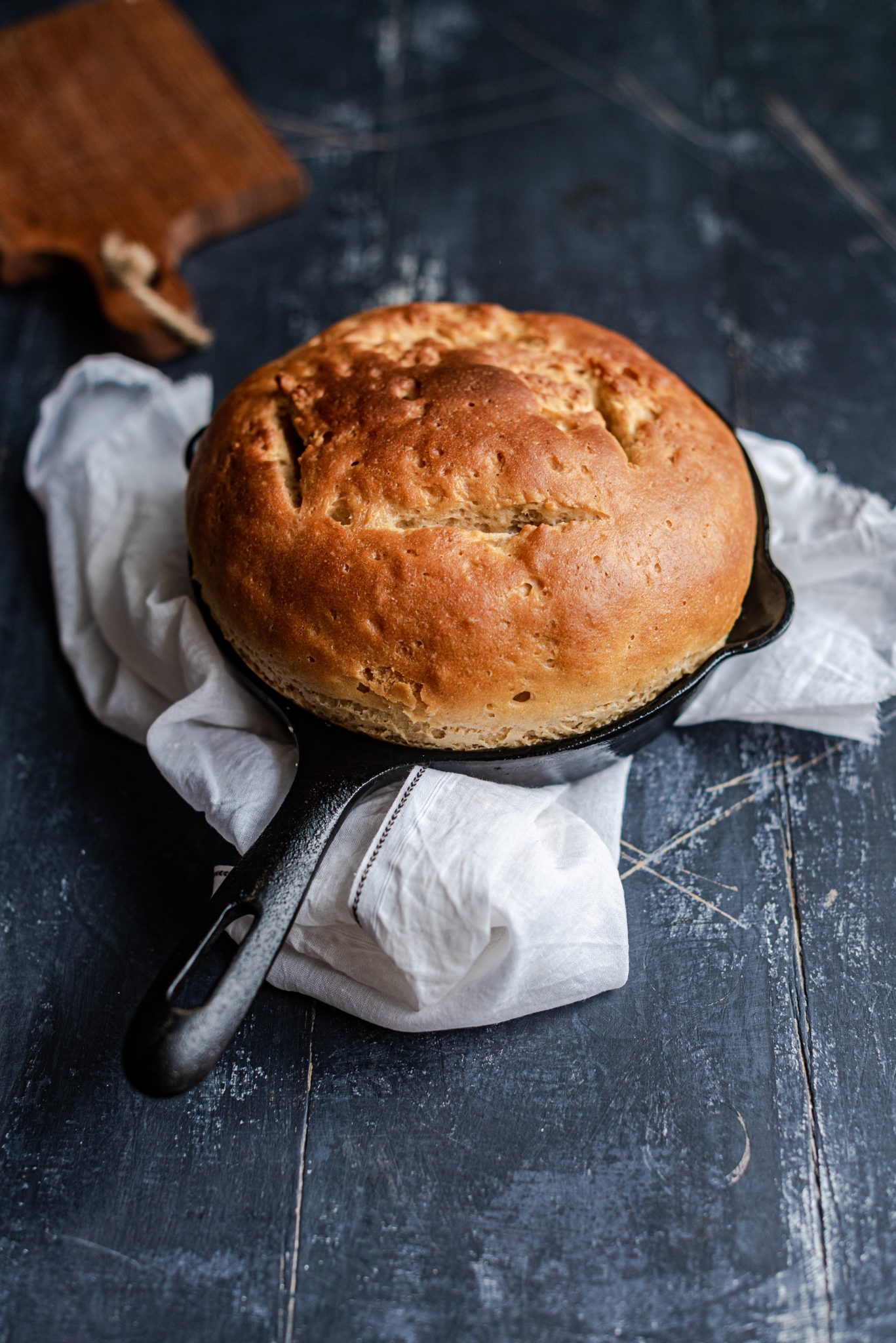
Best Recipes to Cook in New Cast Iron
Whether it’s new from the factory or newly seasoned, you’ll want to take a bit of extra care in the initial use. My recommendation is to use the new piece as much as you can for a couple of weeks before storing it away. You likely will not want to store it away after this, but I digress. Cast iron is one of the only pieces of cookware you can invest in that gets better with age and the more you use it. It’s like the fine wine of cookware. You’ll also want to be sure that during those first few weeks, you are cooking ingredients and recipes that are naturally high in fat and oils such as bacon, cakes, and pot roasts. This gives the cast iron a chance to absorb oil during cooking, effectively seasoning it as it cooks plus the routine care during cleaning. It’s the ol’ one-two-punch!
More of our favorite
Recipes for New Cast Iron
Dishes listed here are naturally high in fat, oil, or require the addition of oil during the cooking process. These are all great recipes to use in the first few weeks of using new or newly seasoned cast iron.
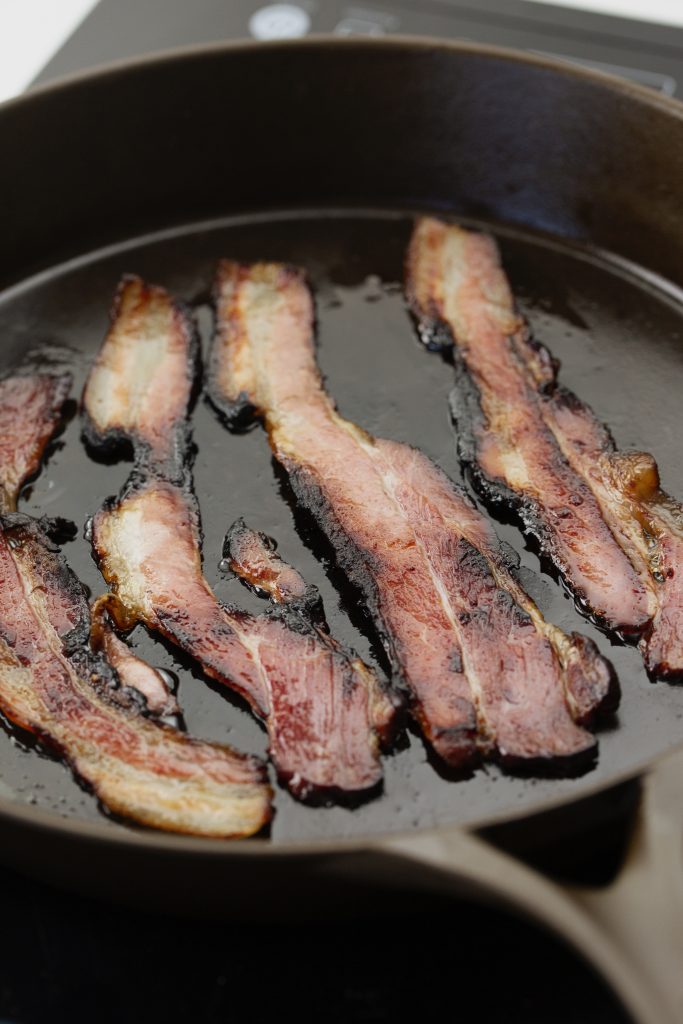


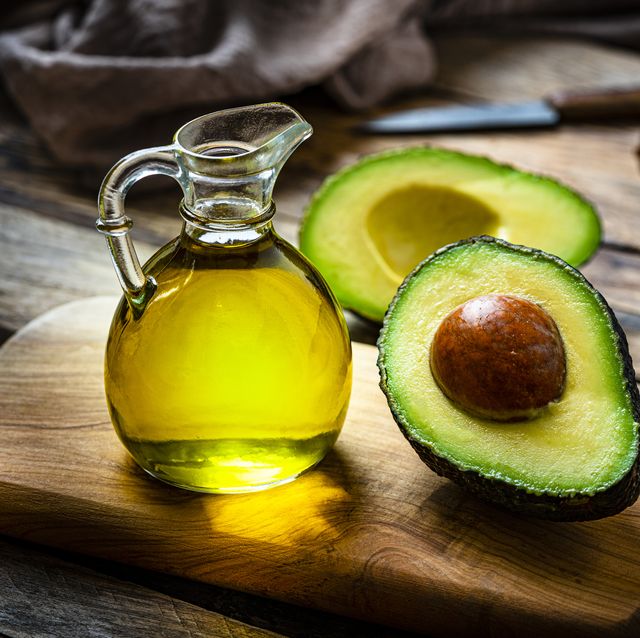

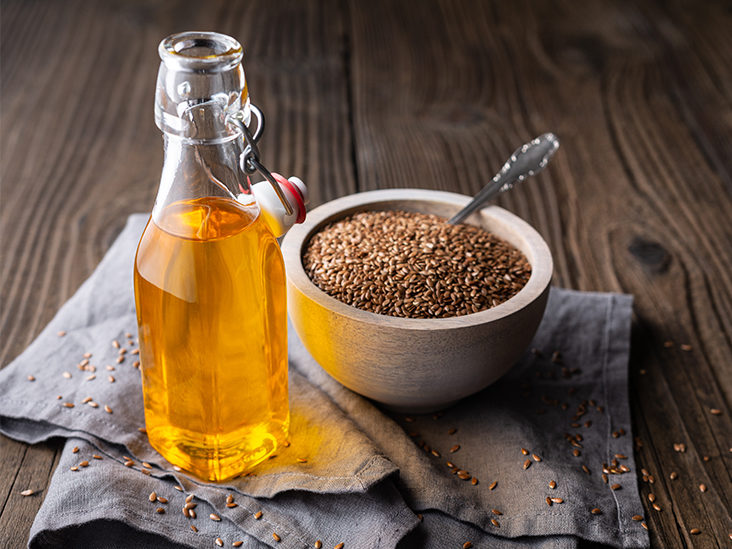

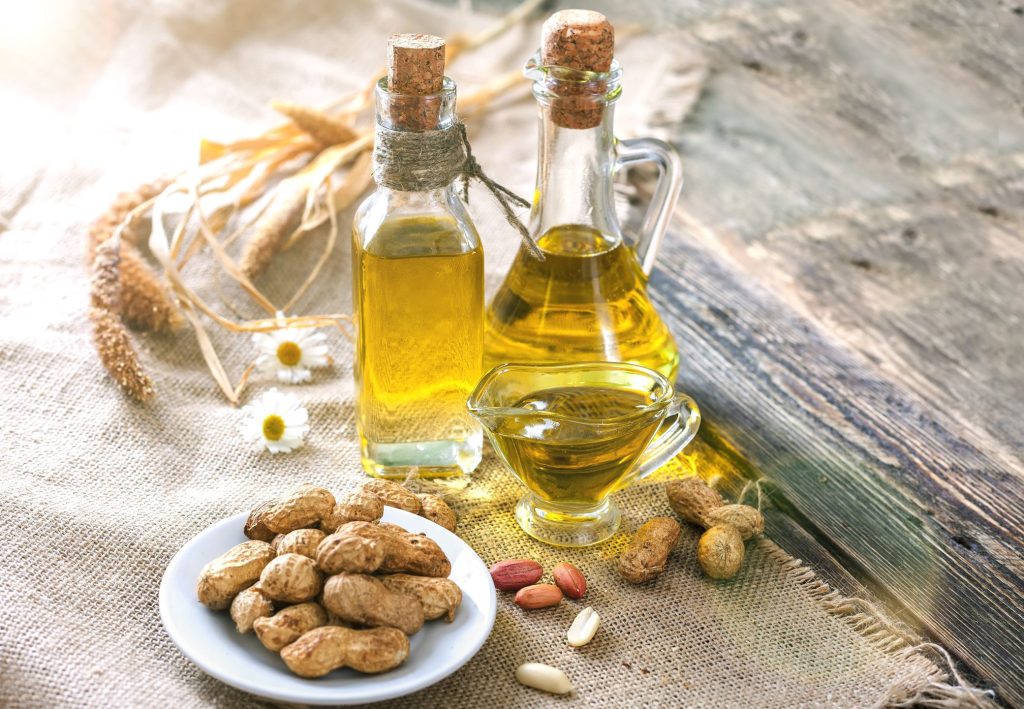
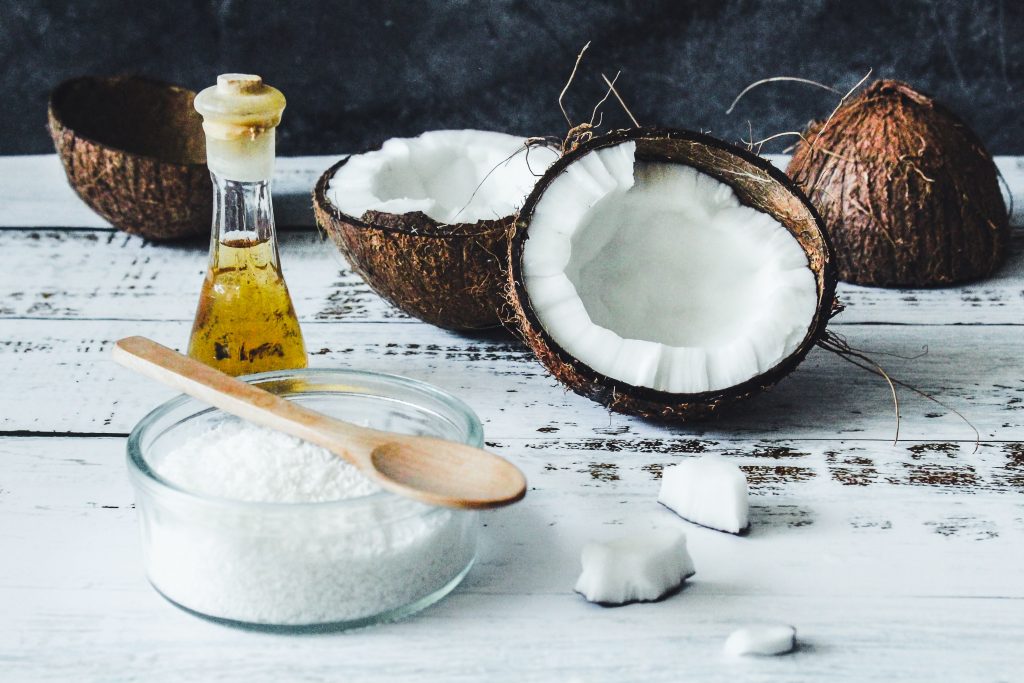
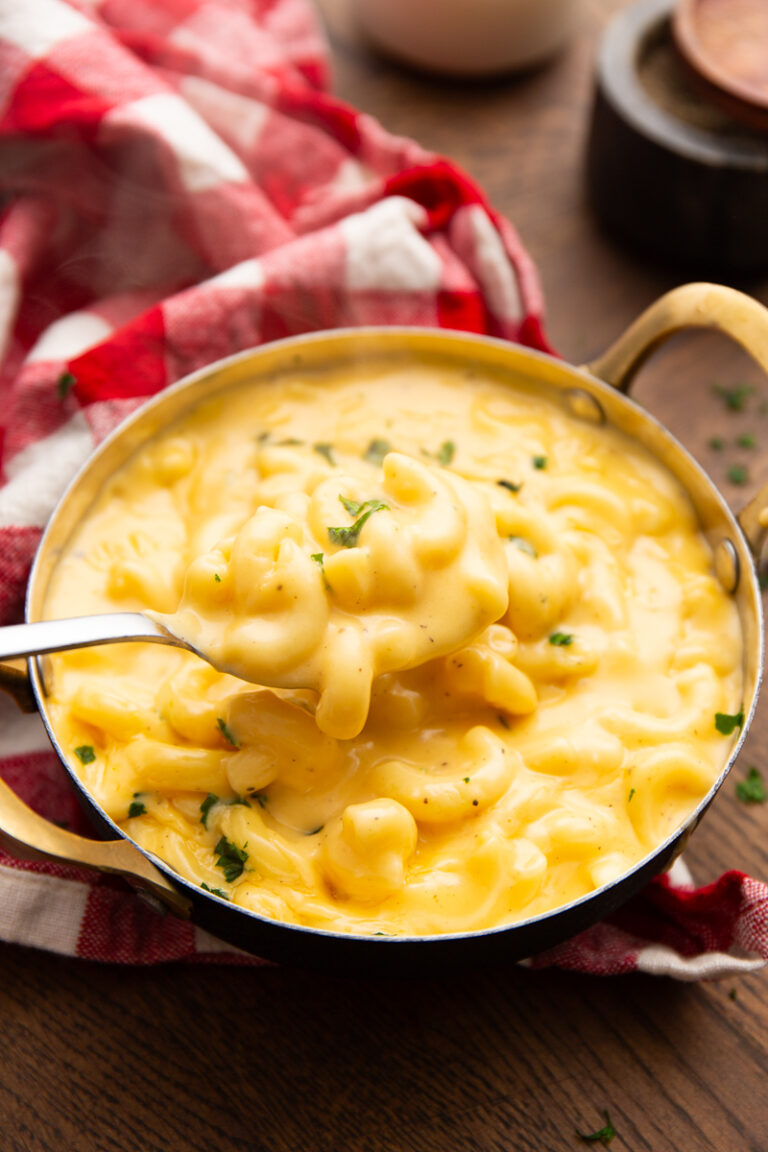
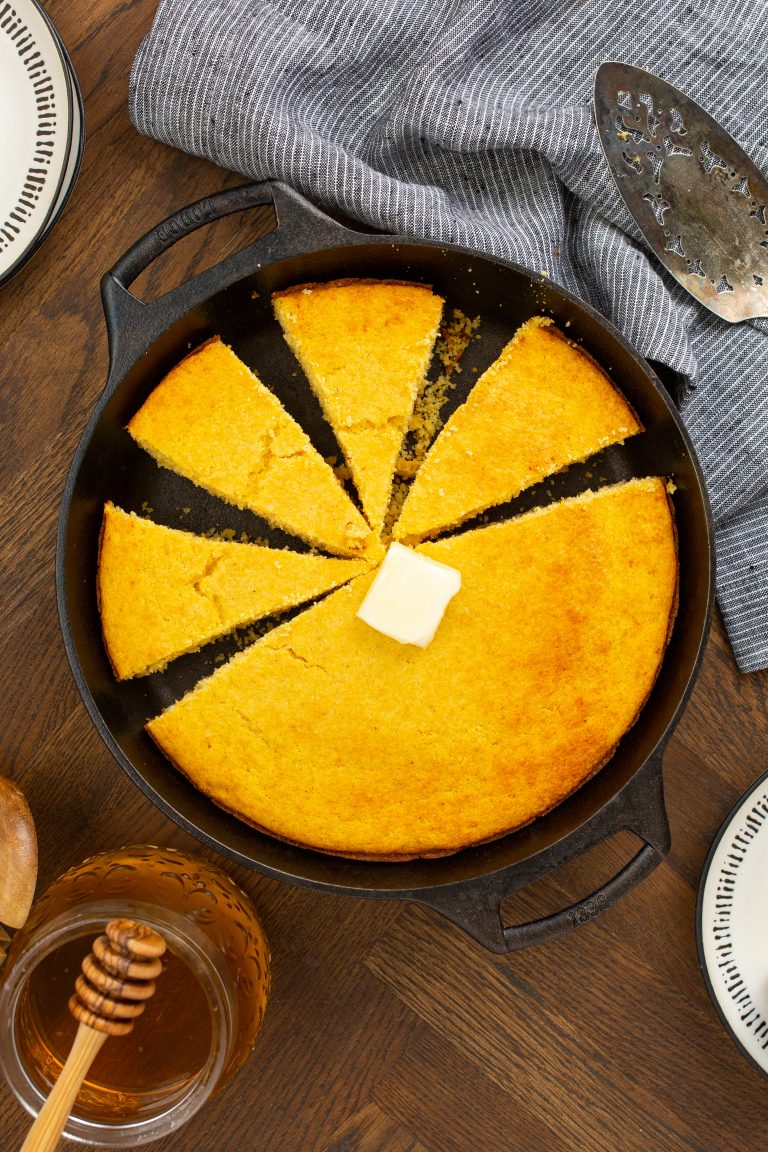
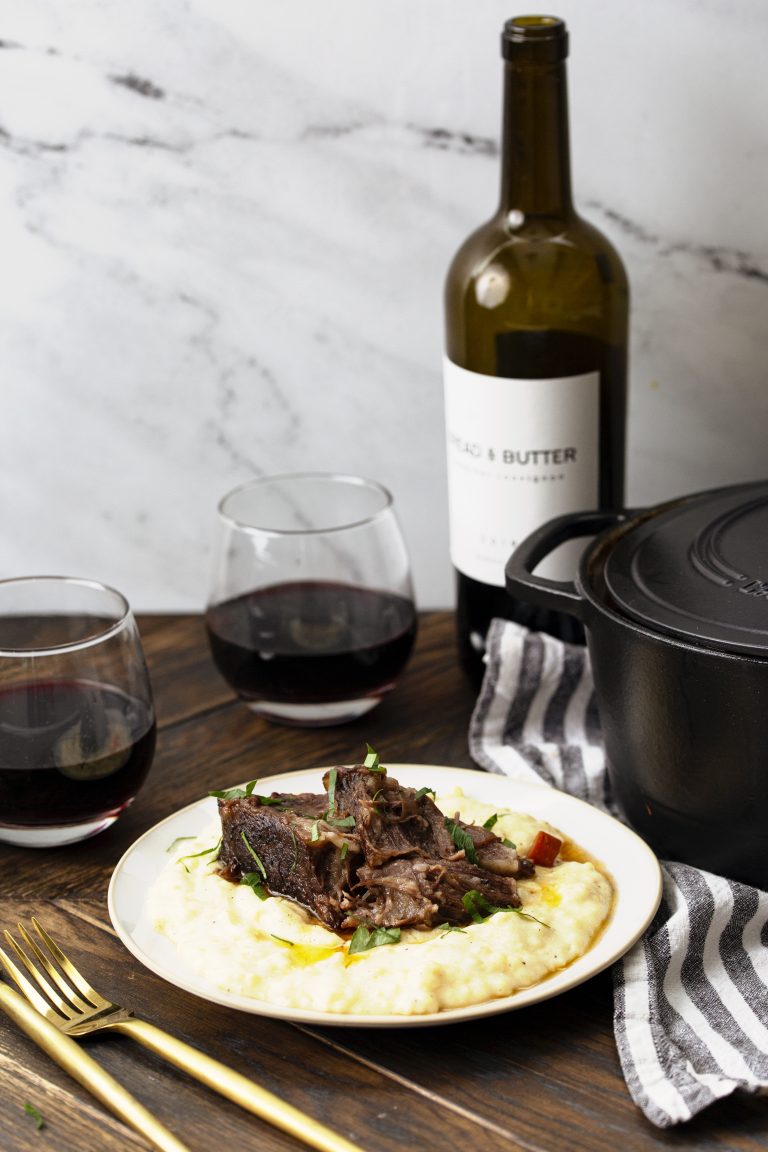
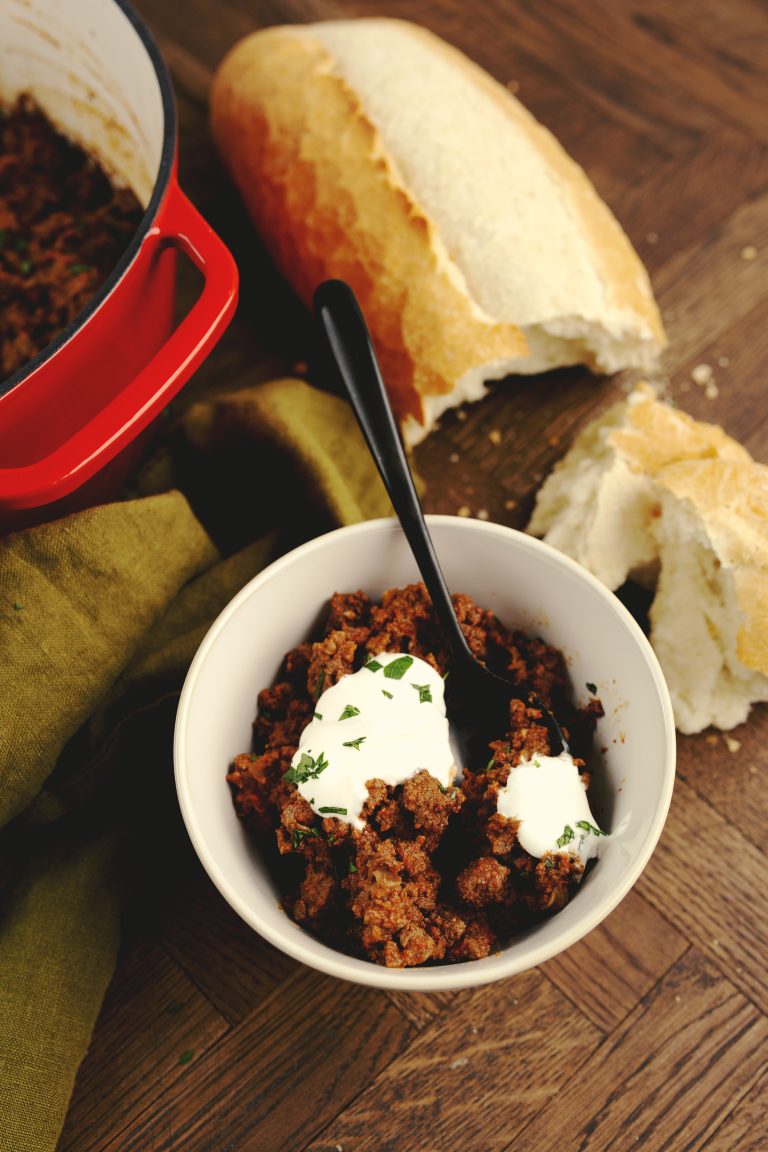
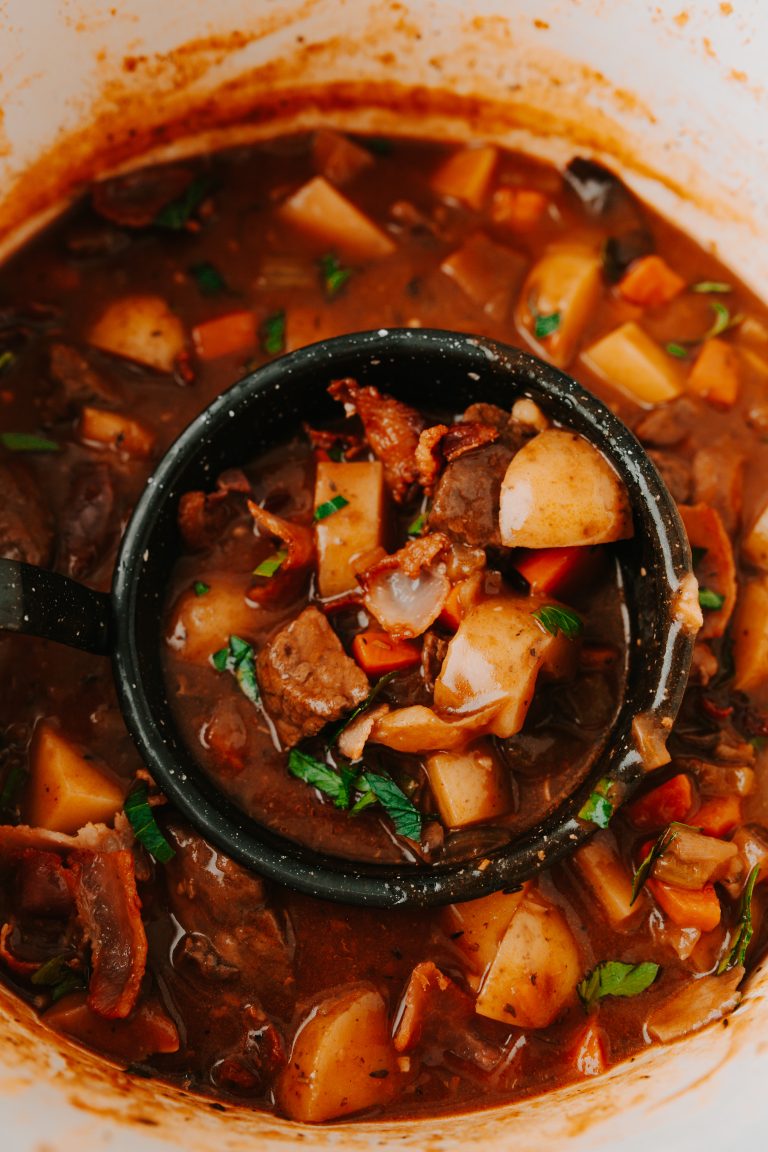




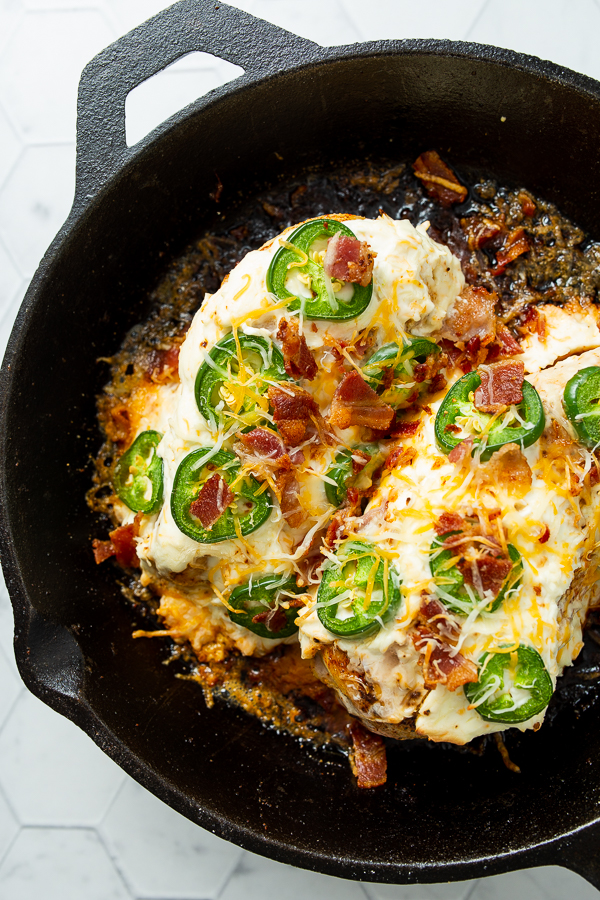




Become A Recipe Insider!
Subscribe to the newsletter for all the latest scratch-made and family-friendly recipes
Leave A Review!
Love this recipe? Make sure to comment below and let me know your thoughts!